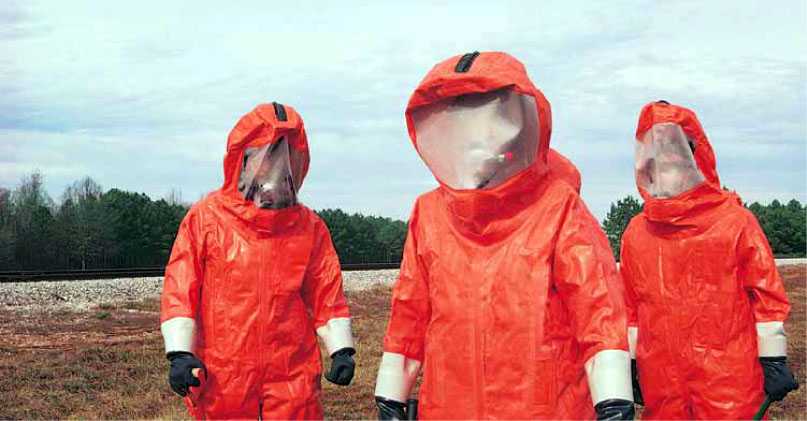CDC Responds to Disease Outbreaks 24-7
CDC Responds to Disease Outbreaks 24-7 [PDF – 325 KB]

- CDC is the nation's leading public health agency, dedicated to protecting the health of Americans.
- The CDC leads U.S. national health security. CDC works 24/7 to save lives and protect people from health threats here and around the world, including contagious disease outbreaks. In the last two years, CDC sent scientists and doctors out more than 750 times to respond to health threats.
- There are many kinds of viruses and bacteria that can threaten people's health and sometimes kill even otherwise healthy people.
- In the past 30-years, CDC investigated 30 new contagious diseases—averaging one new contagion per year. In some cases, these new contagious diseases are only a plane-ride away from our hometowns.
- One important area of CDC's focus is to detect and respond to avian and other novel influenza viruses with the potential to cause a human influenza pandemic as well as viruses of unknown origin.
- CDC is on 24/7 to answer the call when a community or a country needs help to save lives and protect people from health threats.
- In a world where a disease outbreak may be a deliberate attack or naturally occurring, it's important that our nation be prepared to respond to all public health threats.
- CDC's laboratory scientists and medical experts led the U.S. public health response during anthrax, SARS, avian influenza outbreaks abroad and during the recent 2009 H1N1 pandemic. They are prepared to respond to the next emerging contagious disease.
CDC's "disease detectives" are experienced and ready to go
- CDC has some of the world's top disease detectives working for them. These CDC scientists fought smallpox until it was eradicated. They discovered Legionnaires disease in Philadelphia and have investigated Ebola in Africa.
- Disease detectives investigate what is causing people to get sick and die. Once they find the cause, they keep looking to answer the key question: "How can they prevent it from happening to other people?"
- These dedicated disease detectives travel to many countries to and the source of a contagious disease. The longstanding commitment of CDC's disease detective unit is to be ready to leave to investigate an outbreak or epidemic before the sun goes down. While there are risks, with the right training and equipment, CDC disease detectives can stay safe even while doing field work in difficult conditions, although several CDC staff have died in the line of duty.
- To become a CDC disease detective and investigate contagious diseases, doctors and other scientists go through a special 2-year training program. Disease detectives go only where invited across the United States and the world to help investigate contagious outbreaks and respond to other public health threats, for example after the Tsunami in Asia and the earthquake in Haiti.
- When there is an outbreak of unknown origin, CDC disease detectives may collect specimens and return them to Atlanta for study in air-tight high-containment labs. The lab scientists wear special suits to keep them safe. In this lab, the scientists work on dangerous and exotic germs that can travel through the air and that have no known treatment or cure.
- CDC is able to reach other health professionals with life-saving information and recommended actions quickly once the cause of an outbreak is found. CDC shares its science and health recommendations to protect people through press conferences, posting information on the Web, actively reaching out to the medical community through Health Alert Networks, and through public health partners.
- CDC helps people cope during health emergencies by giving them accurate and timely risk information. This arms people with knowledge to help reduce fear and the potential for disruptive behavior.
- Quarantine and isolation are, in certain unusual circumstances, proven public health tools to limit the spread of disease, but they have rarely been used, especially in recent years.
- There is a difference between the two. Isolation means separating people who are ill with a contagious disease from healthy people. Quarantine restricts the movement of people who have been exposed to someone or something, to see if they will become ill. The last large-scale use of isolation and quarantine in the U.S. was during the 1918 influenza pandemic.
People can help protect themselves during a respiratory disease outbreak
- Avoid close contact. Members of the public should avoid close contact with people who are sick. When you are sick, keep your distance from others to protect them from getting sick too.
- Stay home when you are sick. If possible, stay home from work, school, and errands when you are sick. You will help prevent others from catching your illness.
- Cover your mouth and nose. Cover your mouth and nose with a tissue or your sleeve when coughing or sneezing. It may prevent those around you from getting sick.
- Clean your hands. Washing your hands often will help protect you from germs. If soap and water are not available, use an alcohol-based hand rub.
- Avoid touching your eyes, nose or mouth.» Germs are often spread when a person touches something that is contaminated with germs and then touches his or her eyes, nose, or mouth.
- Practice other good health habits. Get plenty of sleep, be physically active, manage your stress, drink plenty of fluids, and eat nutritious food.
- Page last reviewed: March 19, 2014
- Page last updated: March 19, 2014
- Content source:


 ShareCompartir
ShareCompartir